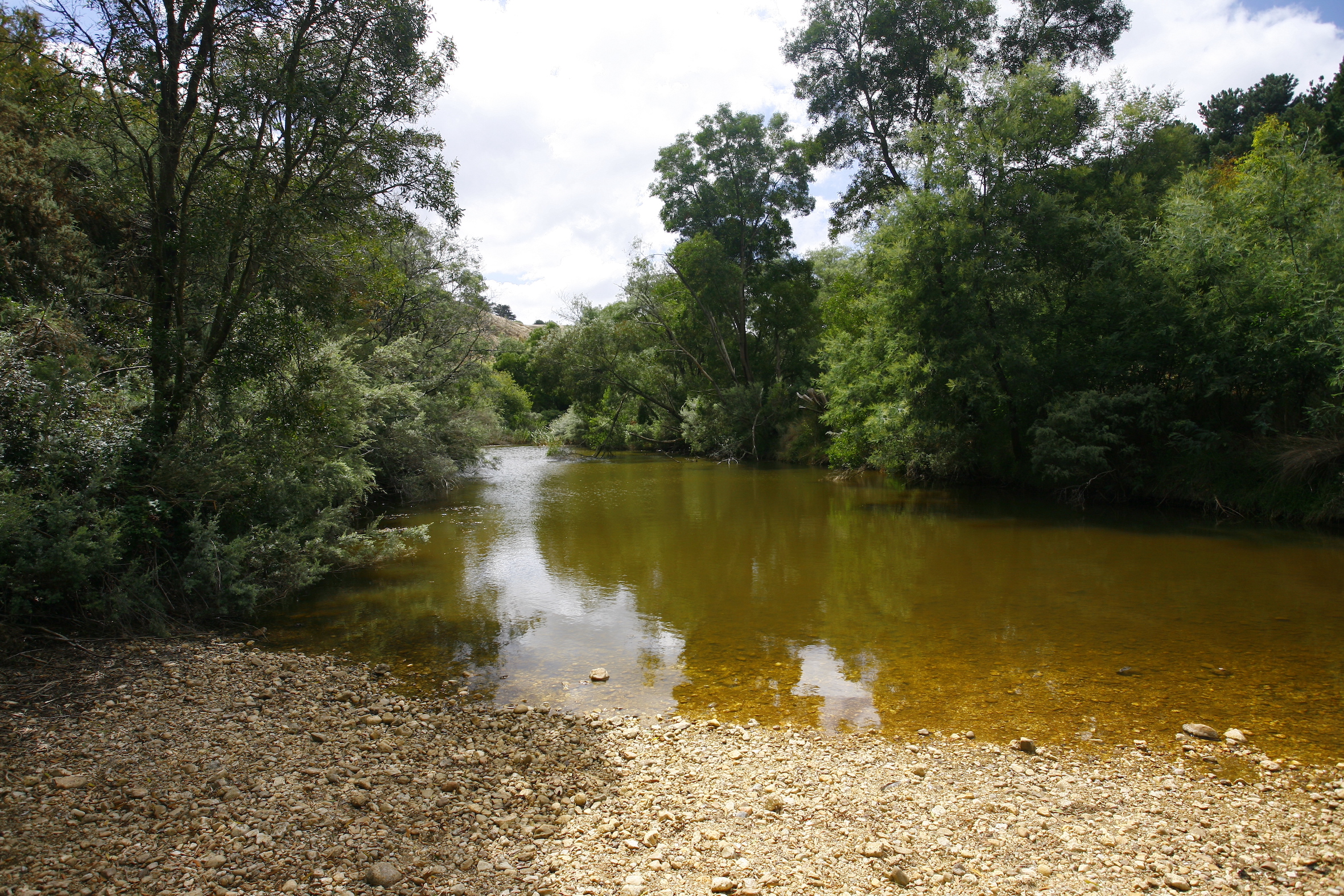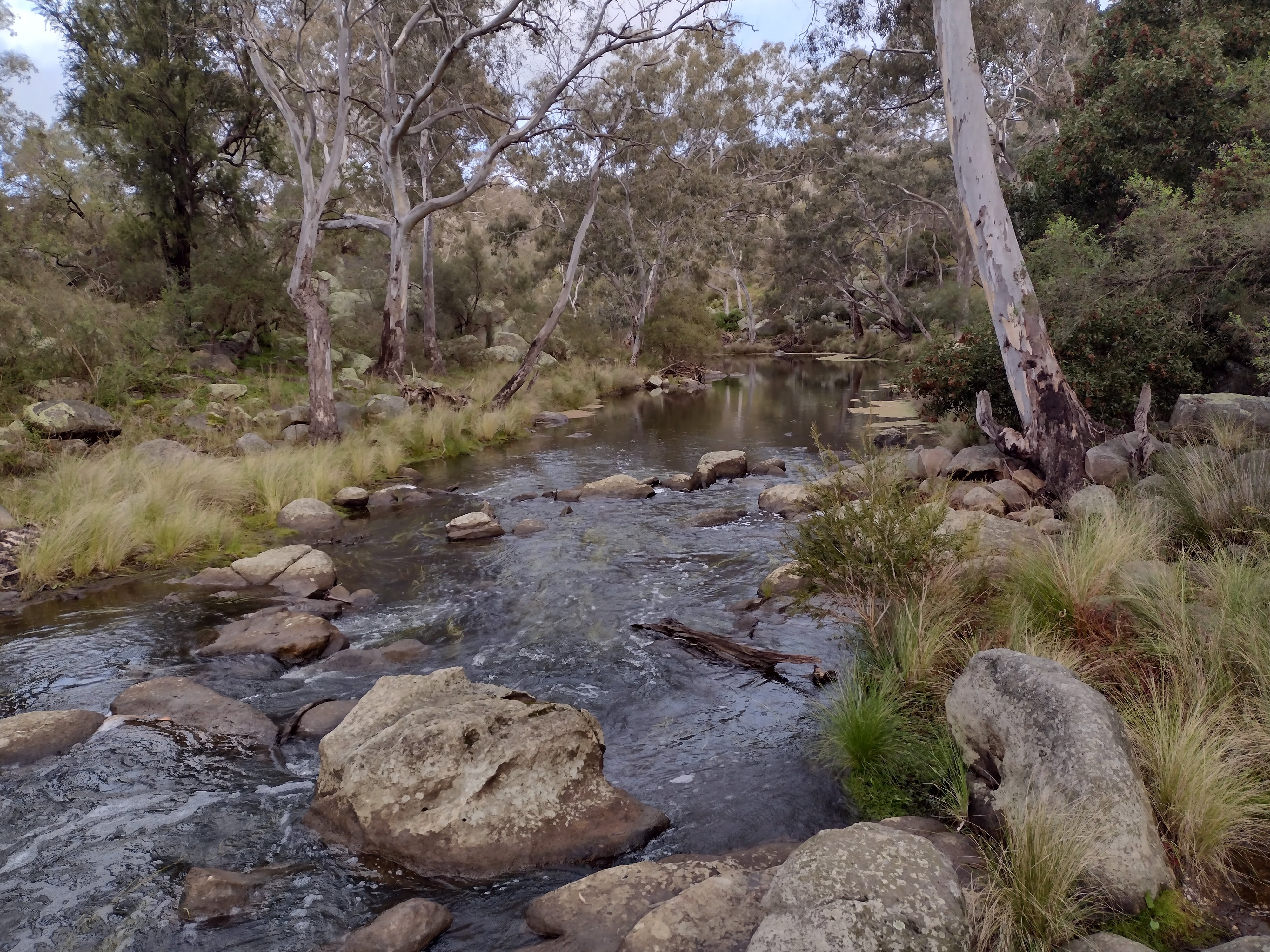The Moorabool ‘Yulluk’ River is a place of significant cultural value for the Wadawurrung people. It flows southward from the Central Highlands between Ballarat and Ballan to join the Barwon River at Fyansford. It is Victoria’s most flow-stressed river, receiving less than half its annual natural flow – with even less in drought years.

The Moorabool River is largely utilised as a water supply catchment for Barwon Water and Central Highlands Water who are water providers for Geelong and Ballarat – two of the fastest growing regions in Victoria. The river is also heavily farmed with roughly 65% of its 1,150km2 deemed as agricultural-related land cover.
The Moorabool River also has significant environmental value as a habitat for numerous native fish species of high conservation value, including:
- Australian grayling
- river blackfish
- Australian smelt
- flat-headed gudgeon
- southern pygmy perch
- short-finned eel
- spotted galaxias
- tupong
Also calling the river home are platypus, rakali and a range of waterbugs.
The Lal Lal Reservoir supplements the river annually with up to 2500 megalitres. These releases primarily affect river reaches immediately downstream from the reservoir. Some benefit is experienced further downstream when releases are ‘piggy-backed’ on top of Barwon Water transfers, which are particularly important for minimising evaporative losses.
As rainfall decreases with climate change, so too will the total amount of water available to the Moorabool River. This is exacerbated by an increase in the number of farm dams, which are diverting a progressively larger proportion of this water by capturing runoff before it flows into the Moorabool River. Even if rainfall is above average, this will still not be enough to relieve long-term rainfall deficits.

The Victorian Government has committed to returning up to 700 megalitres to Reach 1 of the Moorabool River. And up to 6500 megalitres to Reach 2 – see map below. This is part of tackling the above stressors on the river under the Central and Gippsland Region Sustainable Water Strategy.
This strategy was developed through a partnership between Corangamite CMA, Wadawurrung Traditional Owner Aboriginal Corporation and the two water authorities working closely together to determine what water could be returned for environmental and cultural benefits.
This commitment will be reached by a combination of:
-
Transferring a long-term average of up to 3000 megalitres per year from Barwon Water’s bulk entitlement in Lal Lal Reservoir to be shared between the environment and Wadawurrung Traditional Owners by 2025
-
Transferring a long-term average of up to 700 megalitres per year from Barwon Water’s bulk entitlement in Bostock Reservoir to be shared between the environment and Wadawurrung Traditional Owners by 2025
-
Increasing use of stormwater, recycled water or efficiency measures to reduce water extraction from rivers for cities and towns as well as increase their use as sources for environmental flows if appropriate, and
-
Substituting river water with manufactured water in the longer-term.
The Victorian Government, Corangamite CMA and the Wadawurrung Traditional Owners Aboriginal Corporation will also investigate flows required to protect environmental and Traditional Owner values for the upper Moorabool.
“The Moorabool River is one of the most flow stressed rivers in the state. Water is extracted for urban and rural use, and the ecology of the river has suffered as a result."
The Moorabool River Environmental Entitlement was established in 2010, its delivery has improved habitat conditions in the river, but the amount of water held in Lal Lal reservoir for the environment is only a quarter of what the river requires for basic ecological function.
"Even with the commitment for additional environmental water in the Central and Gippsland Sustainable Water Strategy, the Moorabool River still requires increased river flows so the life dependant on it can thrive into the future,” explains Jayden Woolley, Estuaries and Environmental Water Manager, Corangamite CMA.


